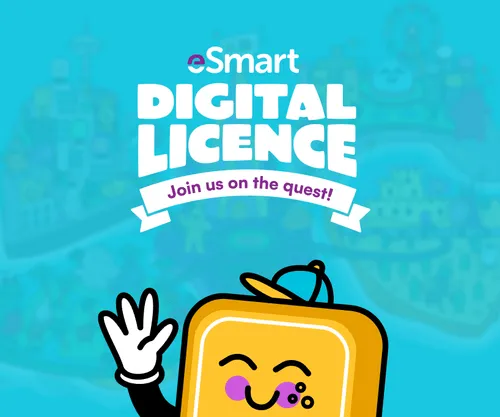eSmart Digital Licence resources
Download the pack

Child Safeguarding Statement
Some resources and activities may prompt a child to remember and potentially share an experience of harm. Make sure you’re familiar with your school's safeguarding policies and procedures so you can confidently report safety and well-being concerns.
Prepare students for the session by discussing: their right to be safe and respected; what to do if discussing online safety makes them feel uncomfortable or unsafe; and how to seek help if they feel or have felt unsafe. Use this resource available on the website.
Navigating the 4Cs of Online Safety
The eSmart Digital Licence program is structured around the "4Cs Framework," which categorises online safety risks as Content, Contact, Conduct, and Compulsion. This framework expands the European Union's “3Cs of Online Safety”1 by adding "Compulsion" to address the behavioural impacts of technology use2.
By completing lessons in each risk area, learners develop positive digital citizenship skills and commit to uphold children's rights, as outlined in the United Nations Convention on the Rights of the Child3.
Co-designed with learners, educators and experts, the program is tailored to Australian children's online experiences, ensuring a proactive, age-appropriate, and rights-based curriculum that equips learners to navigate the digital world safely, responsibility, and ethically.
A closer look at the 4Cs
Content
The media and information learners encounter online, including videos, articles, and images. Learners are taught strategies to identify misinformation, critically evaluate the reliability of information, and recognise bias. By building media literacy and critical thinking skills, learners are empowered to navigate the digital world safely, while enjoying content that fosters a positive online experience.

Contact
Interactions that are initiated by others online, whether they are people or automated systems. This includes learning how to manage privacy settings, identify safe communication, and handle unwanted contact, such as messages from strangers or suspicious accounts. Learners are equipped with strategies to protect their personal information and respond appropriately to any contact that makes them feel unsafe.

Conduct
How people behave online, including how they communicate and the content they choose to share. Emphasising respectful and empathetic engagement, learners explore the importance of following community guidelines, understanding the consequences of their actions, and preventing harmful behaviours like cyberbullying. The goal is to help learners become safe, smart, and responsible digital citizens who contribute to positive and supportive online spaces.

Compulsion
This risk area encourages learners to find a healthy balance between their digital engagement and offline activities. Learners are taught to manage screen time, recognise signs of digital fatigue, and practice self-regulation, ensuring their relationship with technology supports their overall well-being and fosters positive social interactions both online and offline.

References
- Livingstone, S., & Stoilova, M. (2021). The 4Cs: Classifying online risk to children (CO:RE Short Report Series on Key Topics). Leibniz-Institut für Medienforschung | Hans-Bredow-Institut (HBI); CO:RE - Children Online: Research and Evidence. https://doi.org/10.21241/ssoar.71817
- Katz, A., & El Asam, A. (n.d.). Refuge and risk report: Life online for vulnerable young people. Internet Matters. Retrieved from https://www.internetmatters.org/about-us/refuge-and-risk-report/
- UNICEF Australia. (2024). United Nations Convention on the Rights of the Child [Adopted November 20, 1989, by General Assembly resolution 44/25]. Retrieved from https://www.unicef.org.au/united-nations-convention-on-the-rights-of-the-child


